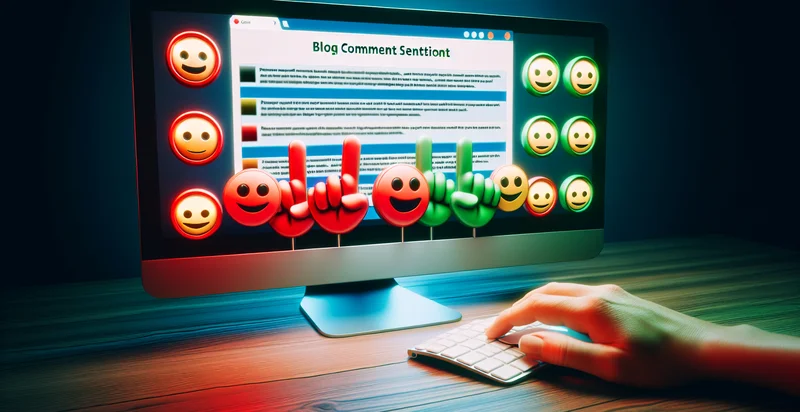Identify business reviews sentiment
using AI
Below is a free classifier to identify business reviews sentiment. Just input your text, and our AI will predict the sentiment of business reviews. - in just seconds.

Contact us for API access
Or, use Nyckel to build highly-accurate custom classifiers in just minutes. No PhD required.
Get started
import nyckel
credentials = nyckel.Credentials("YOUR_CLIENT_ID", "YOUR_CLIENT_SECRET")
nyckel.invoke("business-reviews-sentiment", "your_text_here", credentials)
fetch('https://www.nyckel.com/v1/functions/business-reviews-sentiment/invoke', {
method: 'POST',
headers: {
'Authorization': 'Bearer ' + 'YOUR_BEARER_TOKEN',
'Content-Type': 'application/json',
},
body: JSON.stringify(
{"data": "your_text_here"}
)
})
.then(response => response.json())
.then(data => console.log(data));
curl -X POST \
-H "Content-Type: application/json" \
-H "Authorization: Bearer YOUR_BEARER_TOKEN" \
-d '{"data": "your_text_here"}' \
https://www.nyckel.com/v1/functions/business-reviews-sentiment/invoke
How this classifier works
To start, input the text that you'd like analyzed. Our AI tool will then predict the sentiment of business reviews..
This pretrained text model uses a Nyckel-created dataset and has 20 labels, including Appreciative, Content, Critical, Disappointed, Dismayed, Enthusiastic, Frustrated, Mixed Sentiment, Negative and Neutral.
We'll also show a confidence score (the higher the number, the more confident the AI model is around the sentiment of business reviews.).
Whether you're just curious or building business reviews sentiment detection into your application, we hope our classifier proves helpful.
Related Classifiers
Need to identify business reviews sentiment at scale?
Get API or Zapier access to this classifier for free. It's perfect for:
- Customer Feedback Analysis: The false text classification function can be used to analyze customer feedback across multiple platforms. By identifying positive and negative sentiments in business reviews, companies can gain insights into customer satisfaction and areas needing improvement.
- Brand Reputation Monitoring: Businesses can deploy the sentiment identifier to monitor their brand reputation by classifying reviews and comments. This real-time analysis allows companies to address negative sentiments quickly, thereby protecting their brand image.
- Marketing Strategy Optimization: Marketing teams can leverage sentiment classification to evaluate the effectiveness of advertising campaigns or promotions based on customer reviews. By understanding what resonates positively or negatively, teams can tailor their strategies to improve customer engagement and conversion rates.
- Product Development Insights: The sentiment identifier can help product development teams gather insights from user reviews. By categorizing sentiments related to product features, teams can prioritize enhancements or modifications based on customer feedback.
- Competitive Analysis: Companies can use the false text classification function to analyze reviews of competitors. By identifying sentiment trends, businesses can benchmark their performance and find opportunities to differentiate themselves in the marketplace.
- Customer Support Enhancement: The function can be implemented to improve customer support services by analyzing sentiments in customer queries and complaints. Classifying feedback can help prioritize support tickets and address major pain points effectively.
- Employee Engagement Assessment: Organizations can adapt the sentiment identifier to assess employee reviews and feedback about workplace culture and management. Understanding employee sentiments can guide leadership to implement better practices and improve overall engagement and retention.


